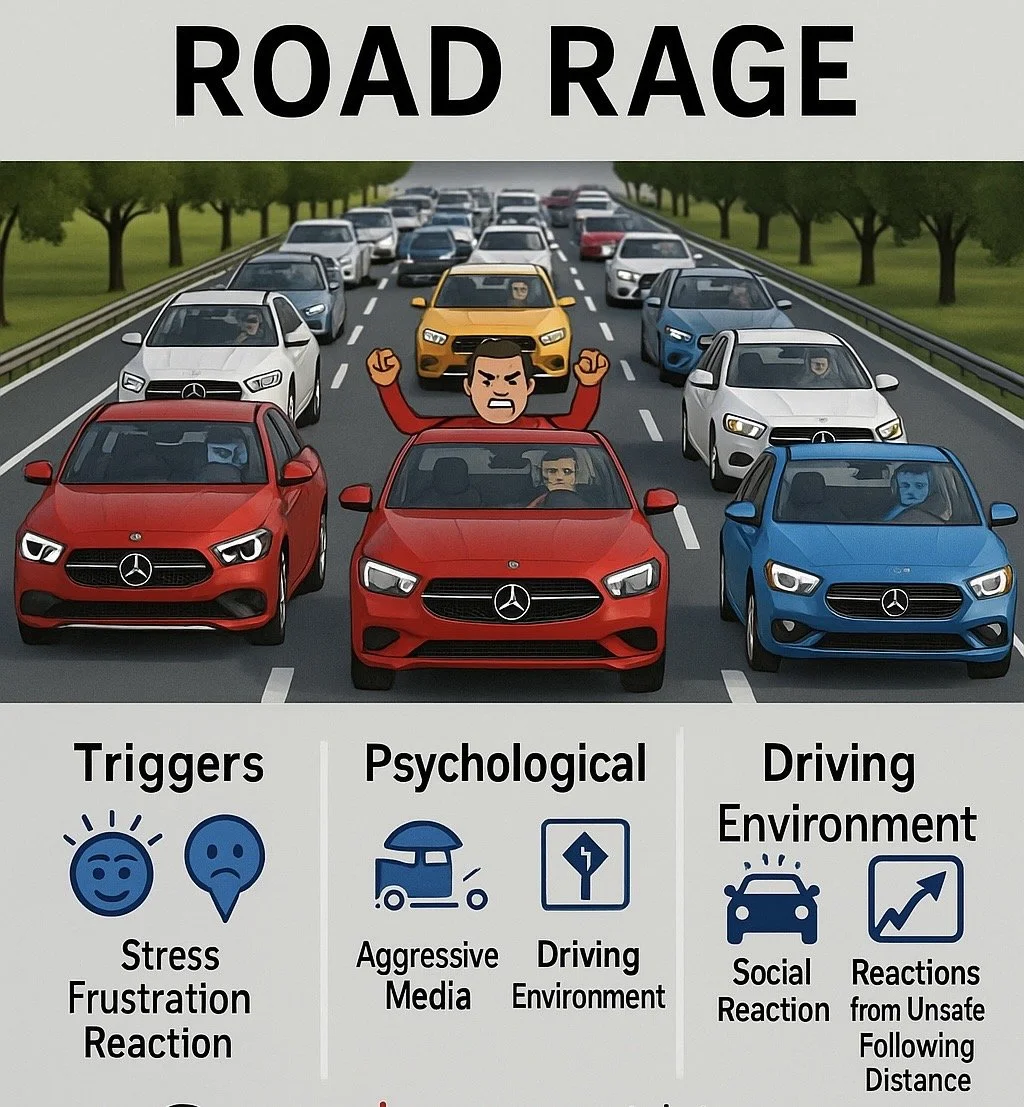Mindful Driving Tips: Understanding Road Rage and Learning to Release Instead of React
/We’ve all been there.
A driver cuts you off. Someone refuses to let you merge. A horn blares behind you even though the light just turned green.
And suddenly — your heart races, your jaw tightens, and anger surges before you even realize what’s happening.
But here’s the truth most people never consider:
In moments of stress, we are conditioned to react, not release.
Why Road Rage Happens So Fast
Driving places us in a space where:
We feel anonymous
We feel rushed
We feel protective of our space
We feel out of control
Those ingredients create a perfect environment for emotional reflexes.
For years, our brains have learned to respond to frustration with tension, defensiveness, and anger. Not because we’re “bad drivers” or “angry people,” but because stress has trained our nervous system to react instantly.
On the road, that reaction shows up as:
Tailgating
Yelling
Excessive honking
Accelerating aggressively
Feeling personally attacked by another driver’s mistake
None of this improves the situation. But our minds do it anyway because we’ve been conditioned to protect, not to pause.
We Rarely Ask Ourselves: “Is this worth my peace?”
The problem with road rage isn’t just the moment—it’s how long it stays in your body after the moment is gone.
That driver who upset you is already far down the road.
But your breathing is still heavy.
Your shoulders are still tense.
Your mood is still affected.
It’s like carrying a weight that isn’t yours.
What if, instead of letting a stranger control your emotions, you learned the skill of release?
Reacting vs. Releasing
Reacting is instant, automatic, emotional.
Releasing is deliberate, mindful, liberating.
Reacting says:
“Why would they do that? What’s wrong with them?”
Releasing says:
“Maybe they’re rushing to an emergency.”
“Maybe they made a simple mistake.”
“Maybe this moment doesn’t deserve the rest of my day.”
Releasing is not weakness.
It’s mastery.
A Meditation You Can Practice Behind the Wheel
When you feel road rage building, try this simple 10-second practice:
Breathe in deeply for 4 seconds.
Feel your shoulders relax.Hold for 1 second.
Notice the pause. This is where choice lives.Exhale for 5 seconds.
Let the frustration leave with the breath.Say to yourself:
“This moment will pass. I choose calm.”
This tiny pause interrupts your conditioned reaction and replaces it with awareness.
What If Driving Became a Time to Center Yourself?
Most people see driving as a stressful chore.
But it can become one of the best opportunities to practice staying calm in a chaotic world.
Imagine:
Arriving at your destination more relaxed than when you left
Feeling in control of your emotions instead of letting others control them
Building a habit of patience that carries into your home, your work, your relationships
When you learn to release instead of react, you bring more peace into every part of your life—not just the road.
A Final Thought
Every day, you’ll encounter drivers who are stressed, distracted, tired, or simply imperfect humans doing imperfect things. We experience them in daily basis when our students learn to drive safely in our school.
But you get to decide how much of your energy they take with them.
Road rage is a conditioned reaction.
Calmness is a trained response.
And like any skill, the more you practice it, the stronger it becomes.
The next time someone frustrates you on the road, try asking yourself:
“Is this moment worth my peace… or can I release it?”


